Want to learn how yoga can help you build core strength? In this blog, you learn core exercises to address core strength as a whole (not just your abdominal muscles). For each exercise, you’ll find technique walkthroughs, helpful photos, target areas, and recommended the recommended reps or hold time.
To help you better understand yoga for strength, strength training, and core strength, I’ve also included additional sections to help you: (1) understand how yoga helps you build muscle, (2) how you can use yoga for strength training, and then (3) what you should focus on while practicing yoga in order to get the most core strength out of your workouts. As a special bonus, you’ll also find a FREE 30-minute yoga for strength workout from my Strength Foundations Course, the most popular yoga workout program in my online Members’ Area. Check it out, all below!
But before I get started, I have to be very clear about one thing
Yoga is a VERY broad form of exercise, and what I write about here is NOT typical of most forms of yoga.
There is a certain way to practice yoga in a way that builds strength, and you won’t find that at a typical yoga studio or online class. That’s not to say that it can’t be applied to some yoga classes after it has been learned, but 99% of yoga classes will not cover what I’m about to tell you in this blog.
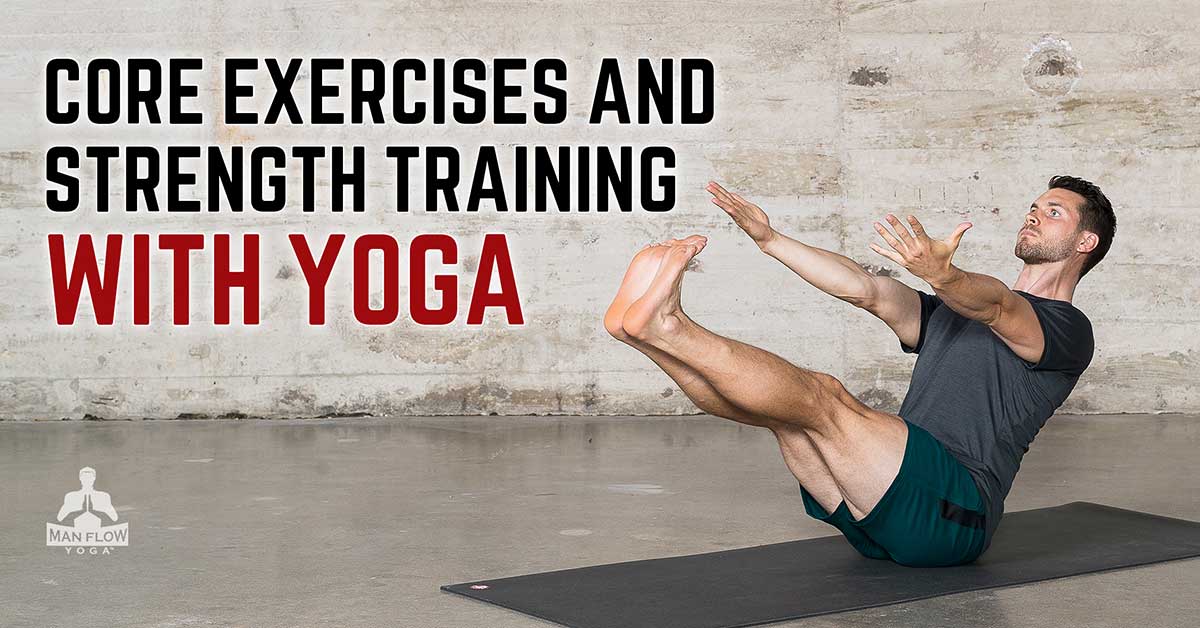
This blog includes:
- Can yoga help you build muscle?
- How can yoga best support my goal of building strength?
- Building core strength with yoga for strength
- Improving muscle activation & body awareness
- Practicing yoga for core strength & muscle activation
- Core exercises from my yoga for strength workouts
- Photos, technique-walkthroughs, and pointers for each exercise
- FREE 30-Minute Yoga for Strength Workout (from my Strength Foundations Course)
- Build core strength, improve breathing, and increase muscle engagement
- Beginner-friendly, no yoga experience required
Can yoga help you build muscle?
The simple answer is “yes”. Yoga can help you build muscle. But the degree to how effectively yoga can help you build muscle varies dramatically, based on not just the TYPE of yoga you’re practicing, but also the yoga instructor.
So if you go to a yoga workout, you do something you haven’t done before, and your body starts shaking uncontrollably before you eventually collapse 3 seconds later, then you’re going to build muscle – as long as you eat, hydrate, and sleep afterwards (and aren’t going through too much stress).
Are you going to get super jacked from doing yoga? Probably not.
Does yoga help you build muscle more effectively, with a lower risk of injury, and in less time? Yes – but the degree of this helpfulness depends on the exact yoga workout you’re doing, and I’ll cover that in this blog.
Let’s ask another question.
If your goal is building muscle, is a typical yoga class the best use of your time?
Take a guy who has spent the last 5 years doing resistance training at the gym 3x per week, and then look at a guy who has been doing yoga every day for 5 years, and 9 out of 10 times the guy who lifts weights regularly at the gym is going to have significantly more muscle than the guy doing yoga.
However… that guy who has only been working out at the gym likely has many problems with his or her fitness. Their workouts probably leave them in pain or discomfort every now and then. They probably don’t have the mobility or the core strength to properly do their exercises. They might have recurring issues like back, shoulder, or knee pain. But, they almost certainly have more muscle mass.
The yoga guy, on the other hand, probably feels a lot better. It’s very unlikely that they need to take ibuprofen to get through their workouts, and they’re probably not complaining about their body as much as the guy who’s working out at the gym. But, they’re probably not going to be as happy about their physique. If you’re only doing traditional yoga, you’re not going to have a significant amount of muscle. You’ll also have trouble reaching your body composition goals, as yoga on its own is not super effective for weight loss.
You’ll also likely have some pain in your lower-back and shoulders, just because of the way that typical yoga classes are structured (too many forward folds, and no pulling exercises to balance the pushing, respectively).
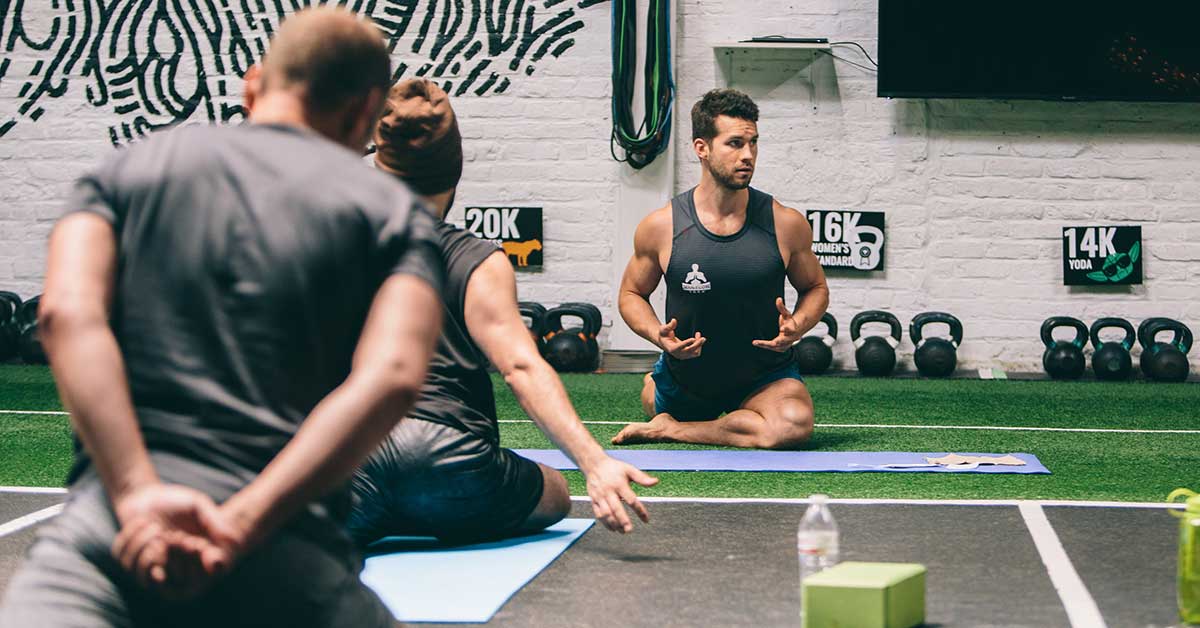
Thinking of replacing strength training with yoga?
Trying to replace traditional strength training (weights & other resistance machines) with a typical yoga class is inefficient, and I don’t recommend it. If you’ve been doing resistance training for years and you switch to an all yoga program, you’ll end up losing a significant amount of within just a few months. That’s because unless you’re doing very advanced yoga (gymnastics, at that point), there’s no way that your bodyweight alone creates the same resistance you’ll get from weights.
Now this isn’t necessarily a bad thing – maybe you didn’t have the necessary core strength or mobility to support that muscle. Maybe you had a bunch of muscular imbalances that made exercise painful, and caused complications in your day to day life. Taking the time to focus on yoga can help you build strength and mobility that you neglected in your other workouts, and you’ll eventually be able to get back to the strength training you used to do, but now with more efficiency, better form, and a lower risk of injury.
My recommendation for you guys is to take some time off the weights to address some of the weaknesses and imbalances that made the weight training uncomfortable. Resistance training shouldn’t be easy, but it also shouldn’t hurt you. If you’ve been lifting with pain for a while now, it’s time to go back and address the weaknesses and the lack of mobility that were causing that pain, and a fitness-centric, yoga for strength program is perfect for that. (See my Strength Foundations Course workout below to get an idea of what that looks like.)
So what do you do?
Luckily, it’s not a choice between one and the other. The best way to build muscle with yoga is to effectively combine it with other forms of strength training. So instead of asking, “does yoga help you build muscle,” we want to ask…
Looking For A Program?
If you’re looking to start a yoga routine to lose weight, gain muscles, flexibility, and strength, Man Flow Yoga offers on-demand structured programs that complement your lifestyle and schedule. Sign-up below!
Signup for the FREE 7-Day Challenge
How can yoga BEST support my overall strength training goals?
Now we’re asking the right questions! Instead of looking at yoga as a form of exercise to replace weight training, we’re asking how it fits into the overall picture of fitness.
The best way to build strength with yoga is to focus on: (1) core strength and (2) muscle activation – and I’ll give you specific examples in this blog.
Just to name a few of the muscles & muscle groups in your core:
- Abdominals: Transverse Abdominals (deep), Rectus Abdominis (superficial), Internal & External Obliques (sides)
- Hips: External Hip Rotators (Gluteus Maximus, Medialis, & Minimus), Hip Flexors (Aka psoas), Adductors (inner thighs), Abductors (outer thighs), TFL (tensor fascia latta)
- Back: Erector spinae, multifidis
Core strength is more of a system than an individual muscle group. Strengthening your core involves more than just one exercise – it involves a variety of movements designed to strengthen the entire mid-section of your body, so that it can twist, flex, extended, and bend as needed, with adequate force, and without pain.
Your core is important for countless reasons, the most important of which include:
- Facilitating full-body movements (including everyday, functional fitness in addition to squats, overhead press, and lunges)
- A strong core supports your back and spine (a weak core usually leads to low-back pain)
- Balance and stability (core strength is a prerequisite for balancing)
- The ability to hold yourself upright with proper posture
Unfortunately, many of us have very little core strength. Even those of us that exercise regularly might not have a strong core. The following is a quote directly from Princeton University, on “Lumbar / Core Strength & Stability Exercises”:
“Engaging these [core] muscles is not something that most people do consciously, therefore it is important to learn how to effectively co-contract these muscles while performing [core] exercises.”
Source: https://uhs.princeton.edu/sites/uhs/files/documents/Lumbar.pdf
Factors that may inhibit core strength:
- Sedentary lifestyles (sitting on the job)
- Sitting in a chair (desk, commutes, the couch or lounge chair)
- General inactivity
The solution? Part of this is making sure that your workout routine includes an adequate focus on core strength. Including 1-2 solid yoga for strength workouts that involves effective core exercises on a weekly basis can help tremendously. But we also want to be more aware of our core during the day. We can do this by being more active during the day, either by focusing on our posture while sitting, or by getting up and walking around every hour or so.
I recommend a 3-step approach to strengthening your core:
- Make core exercises a regular part of your workout routine, at least 1-2x per week, in which you are focusing on building your core awareness and specifically strengthening your core with core-focused exercises (not full body movements).
- Practicing core awareness throughout the day
- Being more active; putting yourself in positions where it’s easier to engage your core.

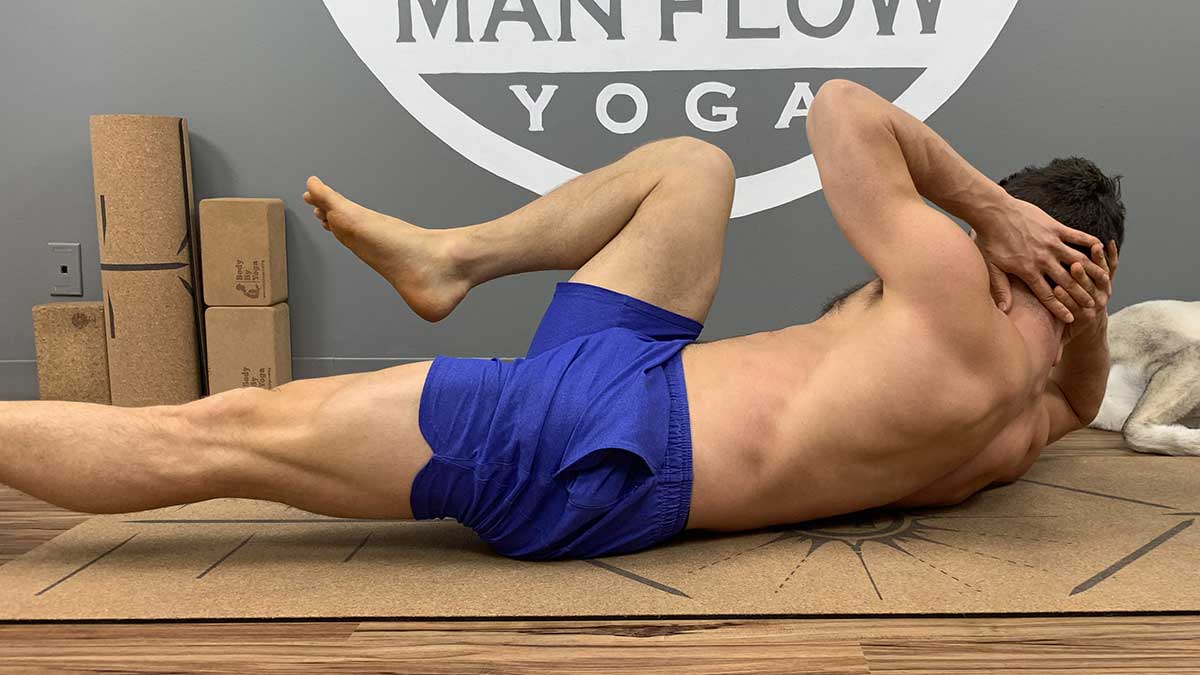
The more you practice core awareness, the easier it will be to build your core strength. And if you don’t think about it that much, don’t worry! The first step of increasing core awareness is simply being aware of the LACK of awareness. So when you realize you’re not using your core, and then adjust yourself, you know you’re on the right path!
Whatever you may call it, muscle activation is the ability to utilize your muscles during exercise. Crudely speaking, it’s the equivalent of flicking your light switch from “off” to “on”. Muscle activation is important because it allows your body to actually use the appropriate muscles when performing a certain exercise. When you don’t have proper muscle activation, this leads to imbalances that can cause discomfort or injury.
I like to explain it like this – having poor muscle engagement is similar to a job requiring multiple people. If you have a 6 person job, but only 4 people show up to work, those 4 people are going to have to work way harder than they’re supposed to. As a result, they may end up overexerting themselves and getting injured. At the very least, they’re not being as efficient or effective as they could be, had the entire team showed up.
Shouldn’t our bodies just know what to do intuitively? Why do we need to work on muscle activation?
If this was 2500 years ago, and we weren’t sitting in an office chair for the majority of our day, none of us would need muscle activation training. But the reality of our lives today is that we’re inactive. We sit in a chair. We’re not moving. As a result, we lose muscle awareness, and can you guess which muscle group is the most inactive?
Yup. It’s your core. Sitting in a chair allows us to totally relax the muscles in our core section. Your hips and your abs completely shut off when you relax into that office chair or sofa. And when you go to workout, they don’t automatically turn back on.
Without core strength, you’ll feel pain in your back, your knees, and even in your shoulders.
This is why developing core strength and working on your muscle engagement is so important.
So… how do you do that? That’s next
Yoga for Strength Training
Core Exercises & Improved Muscle Engagement
The slow-moving and posture-based nature of yoga allows you to build strength in ways that are different from your traditional strength training workouts, such as doing reps of exercises at the gym, weight training, or calisthenics.
If you’ve been doing resistance training for a long time, but haven’t done much yoga, this is great news for you. You’ll notice the effects of yoga for strength training within just weeks of practicing it. And if you’ve done yoga for a while now, but haven’t ever done a Man Flow Yoga workout focused on strength, then you’ll be shocked at just how much more strength you can build with a yoga workout.
Improved muscle engagement allows you to recruit as many muscle fibers as possible, and by doing this, you increase your body’s overall strength potential. It’s literally recruiting more muscle for the exercise, to help you generate more strength, more power, and get a much more effective workout. It will help anyone build more muscle in less time.
Now that you understand the importance of core strength, muscle activation and improved muscle fiber recruitment, let me show you how to do it!
The following exercises are from Lesson #1 of my Strength Foundations Course. This first lesson focuses on breathing and core strength, and it’s a perfect example of an effective yoga for strength workout.
Note: Some of these exercises may seem familiar to you, but if you try them in the way they are explained in the pose walkthrough, it should make these exercises feel significantly different than the way you are used to doing them! Watch the video for a more complete explanation of each posture.
Exercise 1: Knees to Shoulders & Breathing
Lying on your back, squeeze your knees toward your shoulders, keeping your lower-back on the ground. Lightly grip your knees with your hands if you need added stability. From here, focus on breathing as deeply as you can, filling up your entire diaphragm from your pelvic floor (around and below your pubic bone) all the way up to your chest. As you inhale, expand completely. As you exhale, squeeze your belly button to your spine, maximally engaging your abdominal muscles.
- Target Areas: Transverse Abdominals, Diaphragm
- Reps: 6-10 breaths
Exercise 2: Hands to Thighs
Lie on your back with your knees positioned directly above your hips. Squeeze a block (or object of similar width, such as a foam roller) between your thighs. Press your hands into your thighs, and press your thighs back into your hands. Keep this engagement for the duration of this pose, pressing your hands and thighs together as hard as possible, and continuing to squeeze the block (or similar object) between your thighs. Breathe with control.
- Target Areas: Transverse Abdominals, Hip Flexors, Adductors
- Hold for 30-60 seconds
Exercise 3: Single Leg Reverse Crunch, Hands to Thigh
Lying on your back, squeeze your [right] knee as close to your [right] shoulder as possible, keeping your lower-back on the ground. Extend your left toes forward, foot hovering about 6″ – 12″ (15-30 cm) off the ground. Press both hands into your right thigh as HARD as you can, while pressing your thigh back into your hands. As you exhale, push harder. As you in hale, maintain.
- Target Areas: Transverse Abdominals, Rectus Abdominis, Hip Flexors
- Hold for 1-3 [long] breaths per side, then switch (repeat 4x each side)
Exercise 4: Side-Lying Hip Adductions
Lying on your [right] side, cross your left leg over your right leg, and comfortably plant your foot in front of the knee. Squeeze your core and the side of your body. Without bending the ankle, lift your [right] leg toward your inner left thigh. Hold it up as high as you can, maintaining controlled breathing. Continue to squeeze the inner thigh for the duration of the exercise.
- Target Areas: Hip Adductors (inner thighs)
- Hold for 20-45 seconds
Exercise 5: Plank
Start at the top of a push-up position, with your hands under your shoulders. Lift your belly button slightly so your back is flat (but not too high). Squeeze your thighs. To really engage your transverse abdominals here, squeeze your hands and your feet toward one another. Maintain controlled breathing.
- Target Areas: Transverse Abdominals, Rectus Abdominis, Quadriceps, Shoulders & Chest
- Hold for at least 30 seconds
Watch the first full workout from my Strength Foundations Course program!
This is a 30-minute yoga for strength routine focusing on building core strength while focusing on your breathing (another critical aspect of an effective yoga workout).
More Resources
- 5 Low-impact Exercises to Build Muscle & Increase Strength (Photos & Video)
- How often should you be doing yoga? (Blog)
- Unleash Your Butt Power: Glute Activation & Strength (Workout Video)
- Advanced Core Strength Workout – Abs for Inversions
Check out my YouTube channel!
About the author, Dean Pohlman, Founder & CEO of Man Flow Yoga, Author of Yoga Fitness for Men, Expert on Yoga Fitness for Men.
Looking for non-spiritual, yoga for men workouts?
Learn More About Man Flow Yoga and how it can help you with your fitness goals:
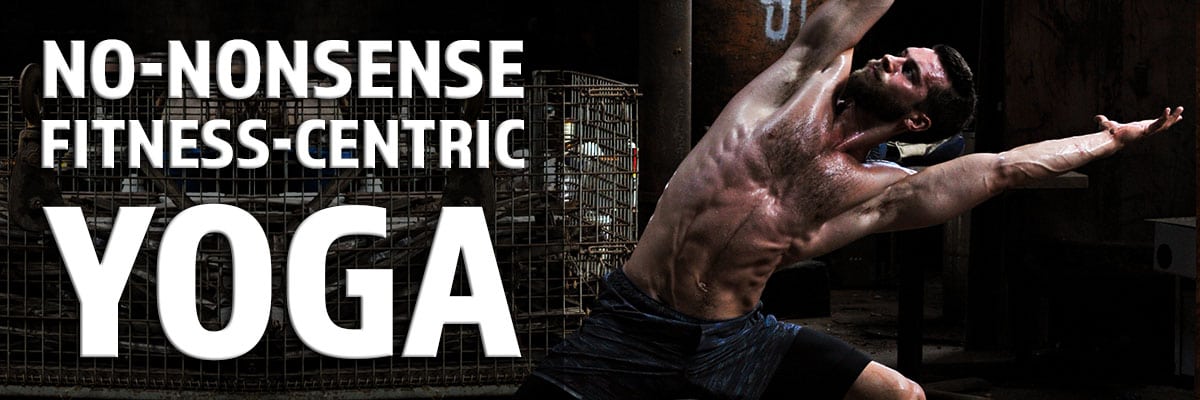 Join Today for Instant Access!
Join Today for Instant Access!
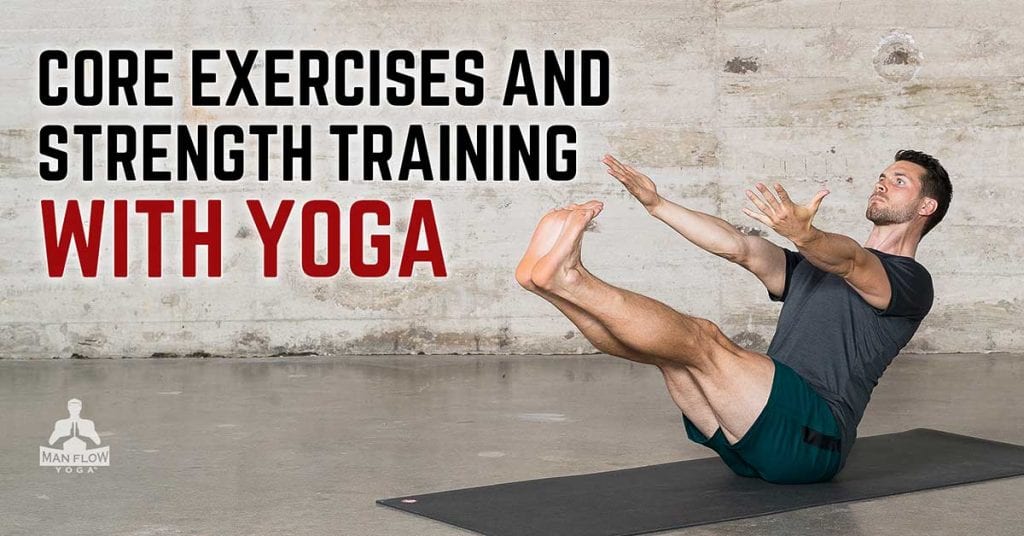
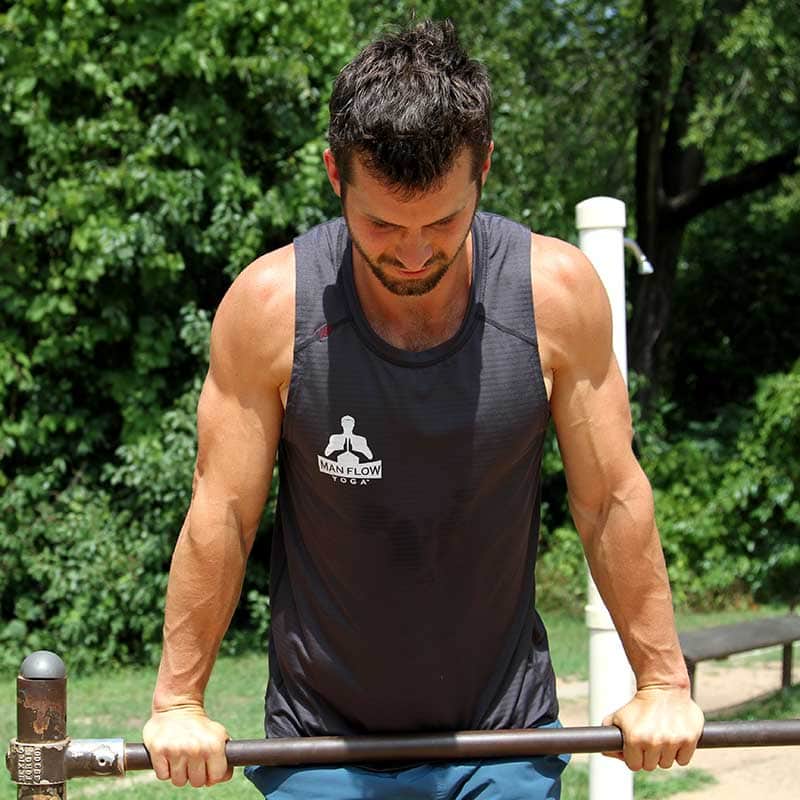
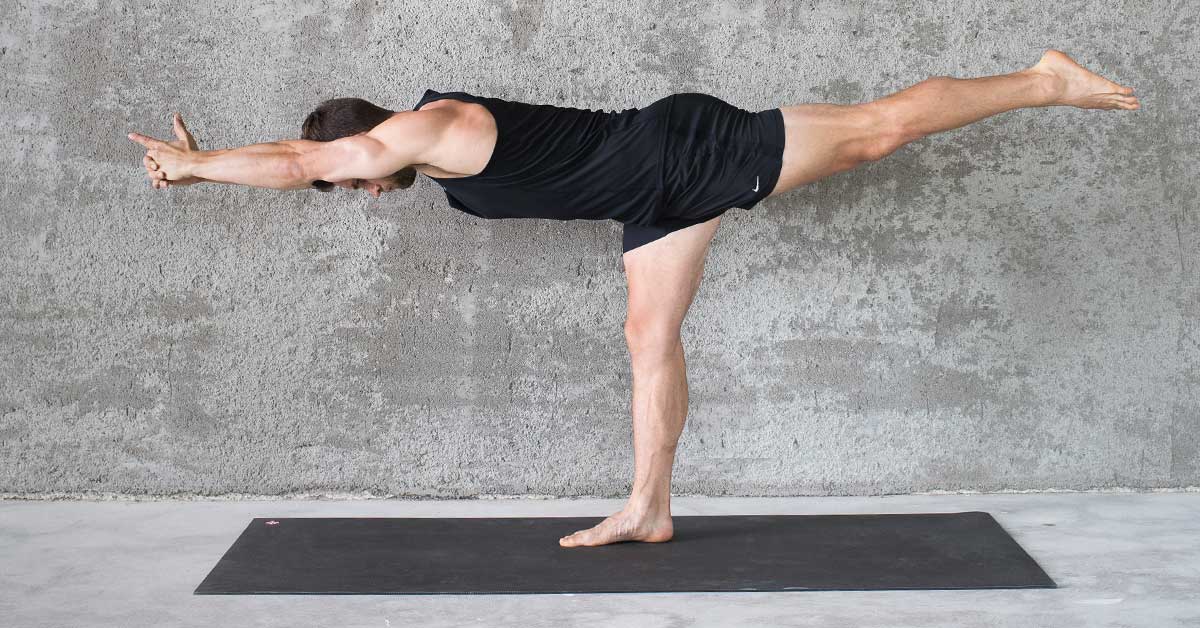
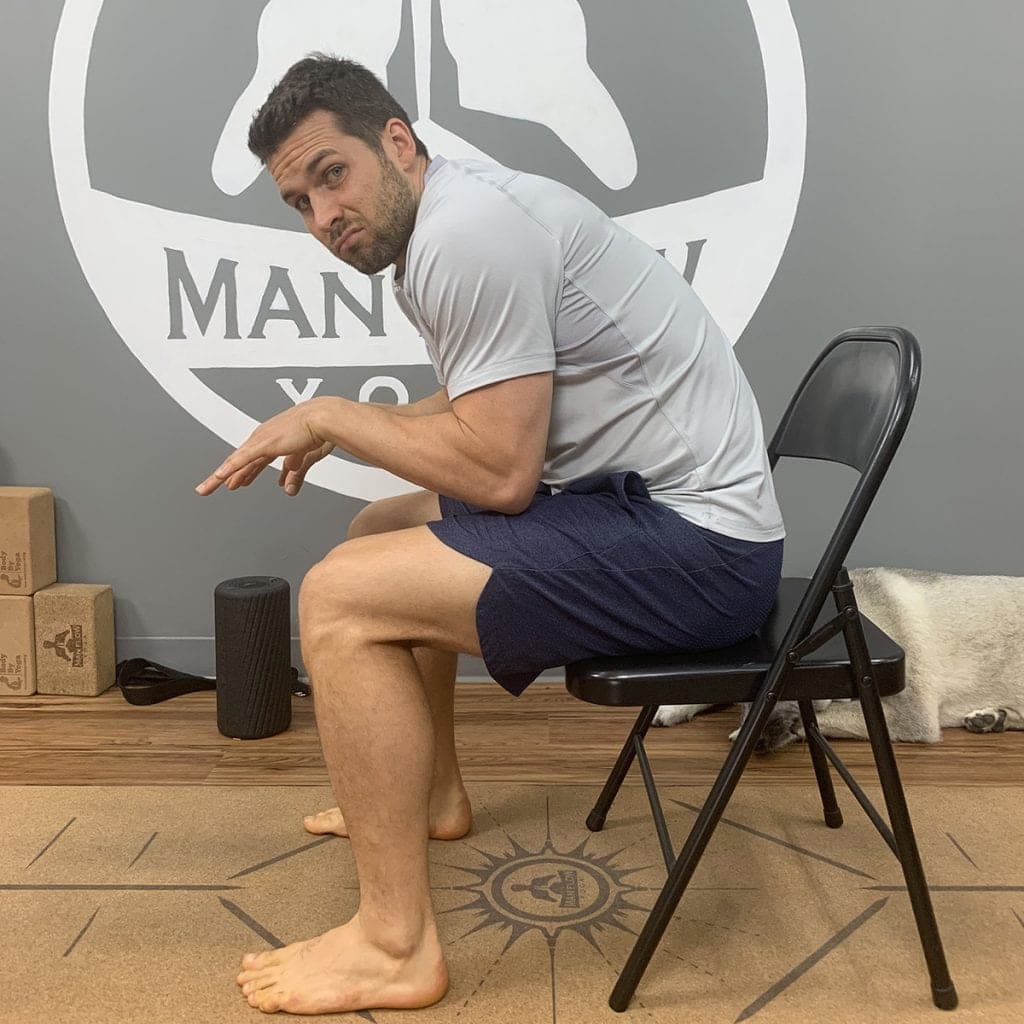
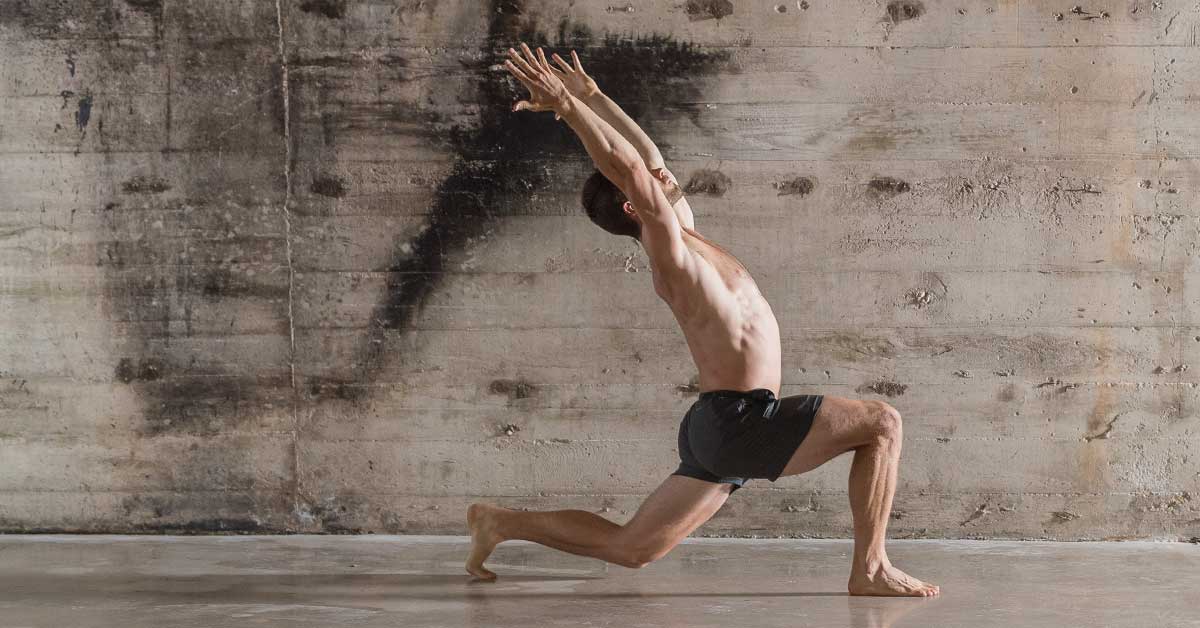
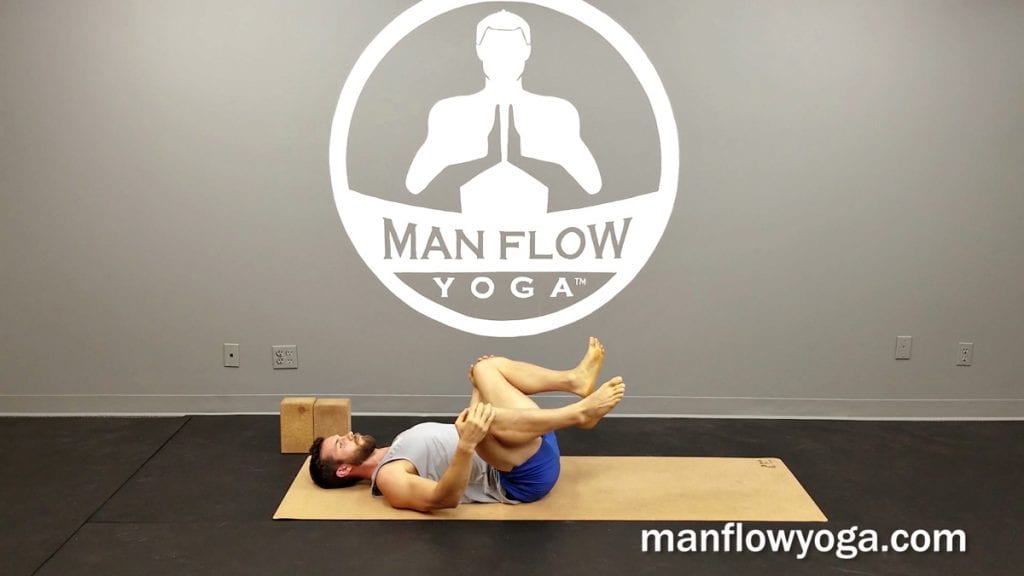
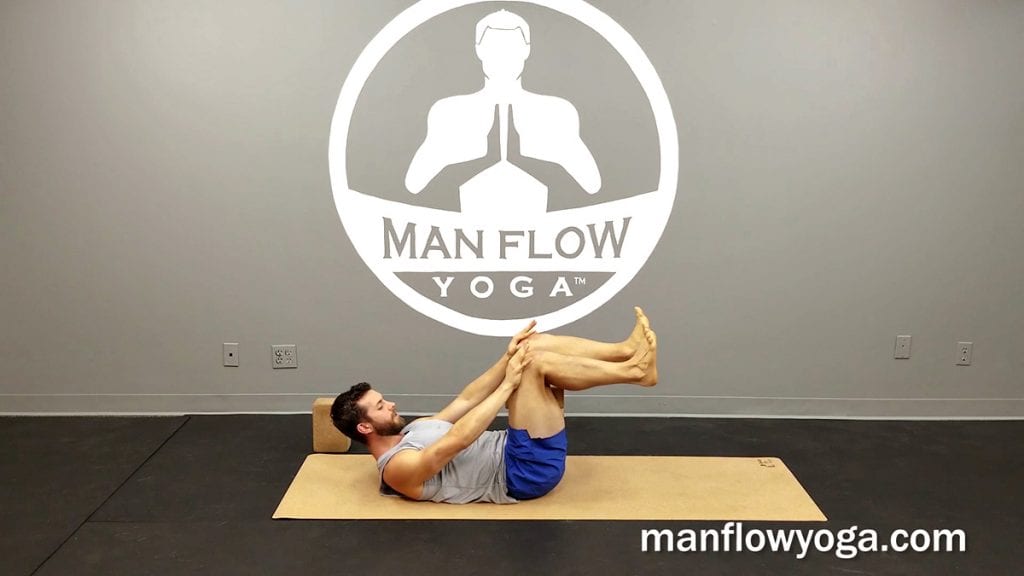
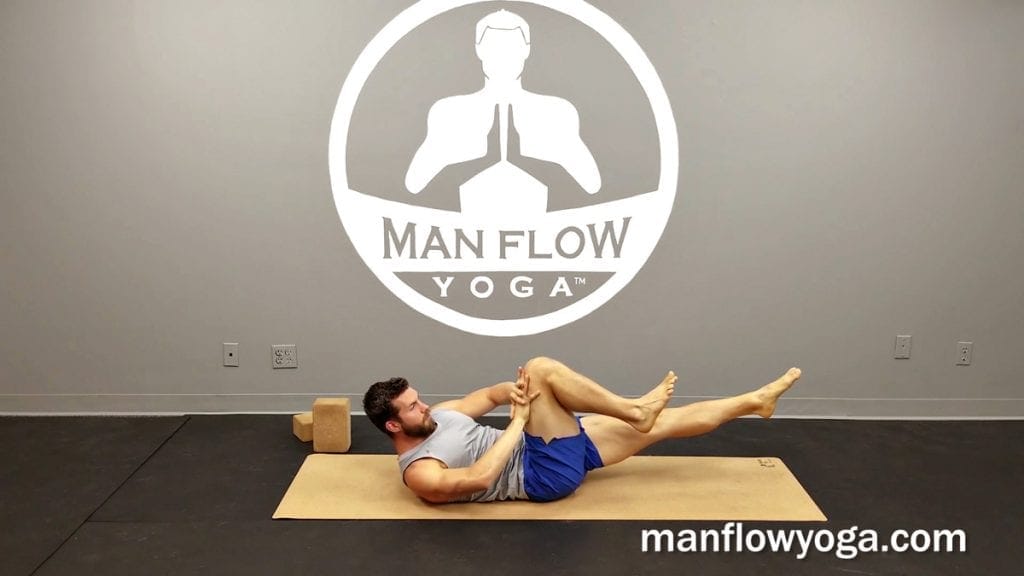
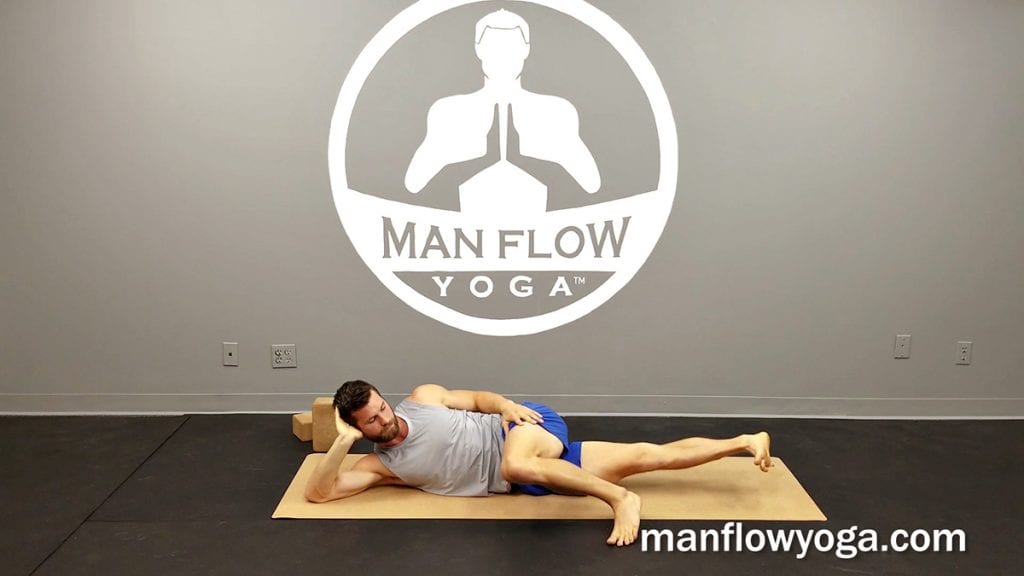
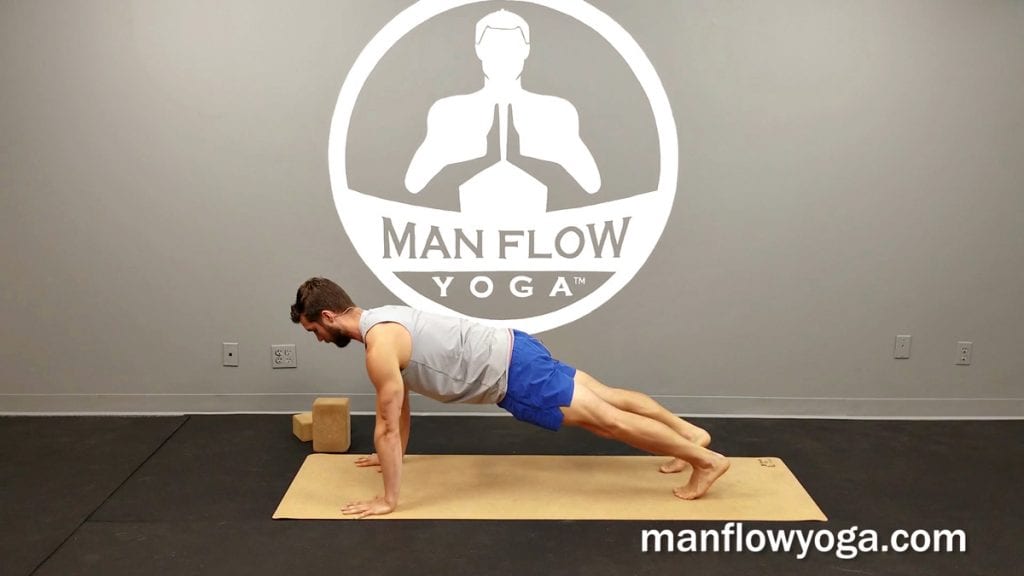

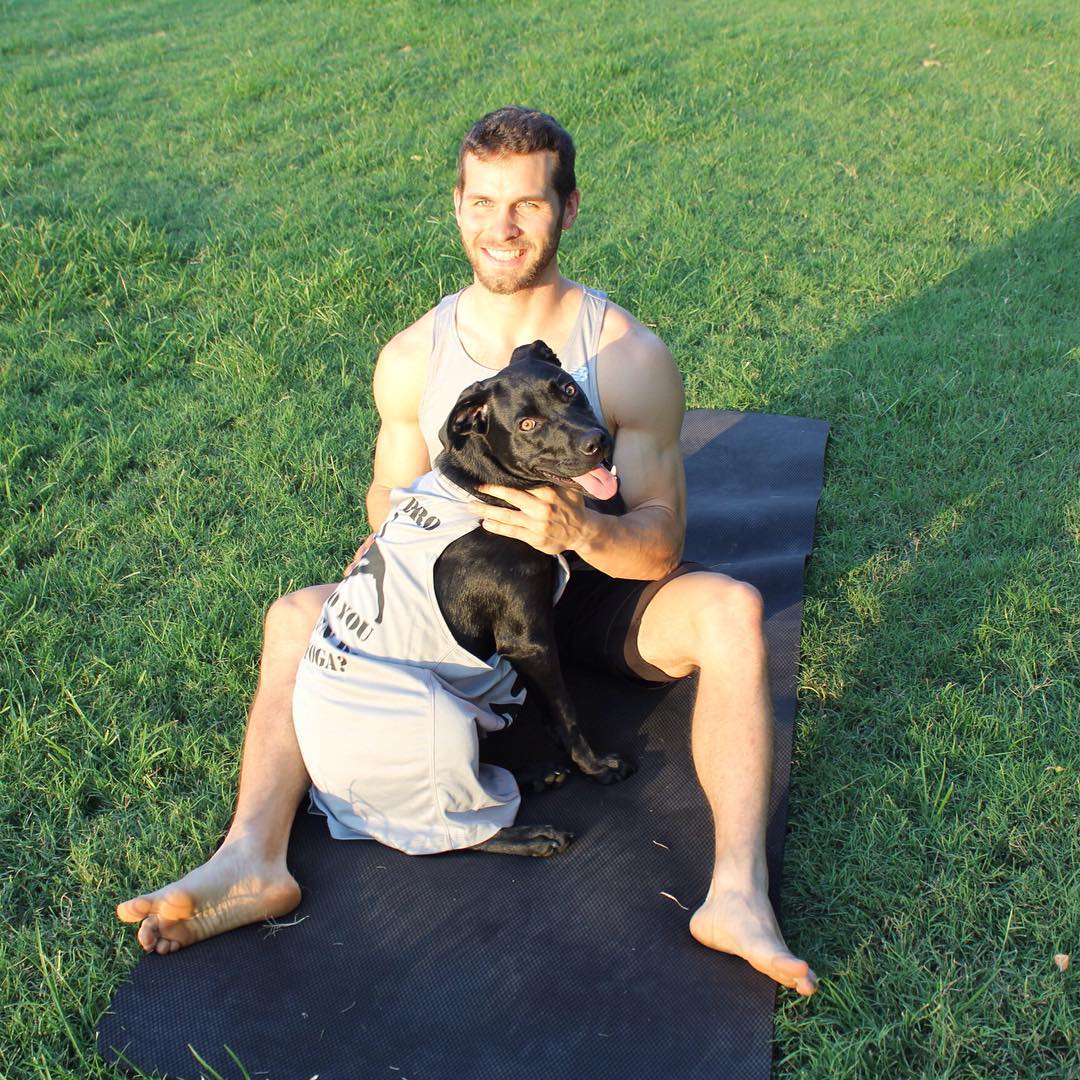
Started with strength foundations this morning. Great low impact stretch and strengthening start. I hope it will help me with balance and core strength and relief of stiffness. Will be 60 years old this year and want to do my best to age without the stiffness and chronic pain that comes with it.
Hey Joel – great choice!! Strength Foundations Course is fantastic for building core strength, while working on stretching and mobility. It will 100% help with your balance, core strength, AND getting rid of stiffness so you can move and feel better throughout the day.
We’ve got a ton of members in their 50s, 60s, and even 70s & 80s. You’re in good company!!